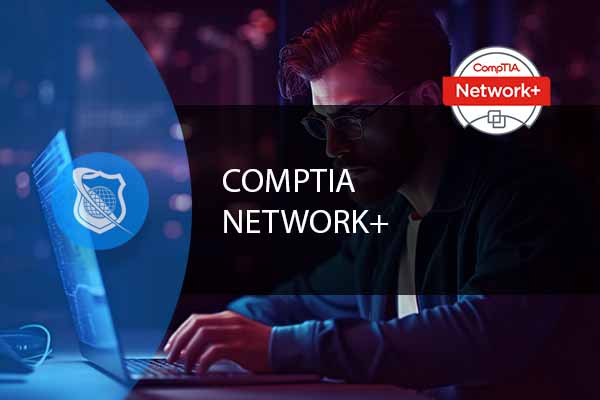What Is Time to First Byte (TTFB)?
Definition: Time to First Byte (TTFB)Time to First Byte (TTFB) is a performance metric used to measure the responsiveness of a web server or content delivery network (CDN). Specifically, it

Let’s dive into network segmentation and it’s implications. In the dynamic landscape of network security, it’s imperative to approach security from an architectural perspective. This means understanding the implications of different architecture models, grasping the nuances of enterprise infrastructure security, implementing robust data protection strategies, and ensuring resilience and recovery in security architecture. At the heart of this intricate web is network segmentation, a critical concept that shapes the way we think about and implement network security.
Network segmentation is akin to dividing a large, bustling city into manageable, secure districts. It involves partitioning the network into multiple segments or zones, each representing a distinct security realm. This approach doesn’t just enhance security; it also streamlines management and bolsters performance by grouping devices with similar security requirements. For instance, surveillance cameras, employee phones, guest Wi-Fi, and servers each reside in their distinct segments, fortified according to their unique security needs.
VLANs can be extended across buildings, floors, and even towns, using trunk links to maintain connectivity and security. However, this flexibility demands meticulous configuration and management. Each VLAN should be appropriately tagged and managed to prevent unauthorized access or breaches.
Our robust CompTIA Sec+ course is the perfect resouce to ensure your company’s most valuable assets are safe. Up your security skills with this comprehensive course at an exceptional price.
Network segmentation isn’t just about dividing a network into different parts; it’s fundamentally about assigning varying degrees of trust to each segment. This concept of trust levels is central to designing a network that’s not only secure but also functional and efficient. Let’s delve deeper into the nuances of trust levels in network segmentation.

Learn concrete vendor neutral Network fundamentals in our comprehensive CompTIA Network+ traning course.
In a VLAN setup, trust levels are implemented by configuring VLANs according to their required security level. For example, a VLAN for guest Wi-Fi access would have a lower trust level than a VLAN used for sensitive financial transactions. It’s crucial to:
In conclusion, trust levels in network segmentation are a critical aspect of network design and security. By carefully assigning and managing these levels, organizations can create a network environment that is not only secure but also conducive to their operational needs. As networks continue to grow and evolve, the importance of effectively managing trust levels will only increase, making it a vital skill for network and security professionals.
Network segmentation, while offering significant benefits in terms of security and management, also comes with a set of implications and considerations that need careful evaluation. Let’s take a deeper dive into these aspects to understand the complexities and challenges involved.
This comprehensive training series is designed to provide both new and experienced network administrators with a robust skillset enabling you to manager current and networks of the future.

Your career in information technology last for years. Technology changes rapidly. An ITU Online IT Training subscription offers you flexible and affordable IT training. With our IT training at your fingertips, your career opportunities are never ending as you grow your skills.
Plus, start today and get 30 days for only $1.00 with no obligation. Cancel anytime.
In summary, while network segmentation is a powerful tool in the arsenal of network security, it requires a thoughtful approach that considers the unique needs and constraints of each organization. Balancing security with practicality, staying vigilant against emerging threats, and ensuring compliance with relevant regulations are all critical to the successful implementation of network segmentation. As technology and threats evolve, so too must the strategies and practices surrounding this crucial aspect of network security.
Network segmentation stands as a cornerstone of network security, offering a structured approach to managing and securing diverse network components. Whether through physical isolation or the strategic use of VLANs, understanding and implementing network segmentation is crucial in building a resilient, secure, and efficient network architecture. As technology evolves, so too will the strategies and methodologies surrounding network segmentation, continually shaping the landscape of network security.
Understanding key terms in network segmentation is crucial for professionals in the field of network security and management. Network segmentation, a vital aspect of modern network architecture, involves dividing a network into multiple segments or zones to enhance security, performance, and manageability. Knowledge of these terms is essential for effectively designing, implementing, and managing segmented networks, ensuring robust security, and addressing the unique needs and challenges of various network environments.
| Term | Definition |
|---|---|
| Network Segmentation | The process of dividing a network into multiple segments or zones, each representing a distinct security realm. |
| Physical Segmentation | Creating an ‘air gap’ between segments, often through physical isolation. |
| Virtual LAN (VLAN) | A method of creating distinct broadcast domains within a network, grouping switch ports into segments that operate as if they were separate networks. |
| VLAN Hopping | A security threat where an attacker manipulates VLAN tagging to gain unauthorized access to different network segments. |
| Trunk Links | Connections used to maintain connectivity and security across VLANs. |
| Trust Levels | Degrees of security and access granted to different segments of a network, ranging from ‘No Trust’ to ‘Very High Trust’. |
| Internet Zone (No Trust) | The outermost layer of the network facing the internet, where no incoming traffic is trusted. |
| External DMZ (Low Trust) | A slightly more trusted zone than the open internet, typically hosting public-facing services like web servers or email servers. |
| Extranet and Enterprise Network (Medium Trust) | Used for interactions with external partners or internal operations, balancing operational flexibility with security. |
| Internal DMZ (High Trust) | Designed for sensitive operations, highly restricted, and monitored. |
| Restricted or Classified Areas (Very High Trust) | The most secure and restricted zone, often physically isolated from the rest of the network. |
| Air Gapping | Completely isolating a network segment, with no physical or wireless connection to other network zones. |
| Dynamic ARP Inspection | A security feature that helps to prevent VLAN hopping by ensuring that only valid ARP requests and responses are relayed. |
| DHCP Snooping | A security feature that mitigates VLAN hopping by filtering untrusted DHCP messages. |
| Security Policy Enforcement | The process of applying and maintaining security measures across all network segments. |
| Compliance and Regulatory Requirements | Legal and industry standards that dictate how data should be protected within a network. |
| Data Protection Laws | Laws such as GDPR and HIPAA that influence how network segmentation should be implemented to protect sensitive information. |
| VLAN Tagging | The process of assigning a VLAN identifier to data packets in a VLAN. |
| Least Privilege Principle | A security concept where a user is given the minimum levels of access – or permissions – needed to perform their job functions. |
| Multi-factor Authentication | A security system that requires more than one method of authentication from independent categories of credentials to verify the user’s identity. |
| Network Resilience | The ability of a network to provide and maintain an acceptable level of service in the face of faults and challenges to normal operation. |
| Intrusion Detection System | A device or software application that monitors a network for malicious activity or policy violations. |
These terms form the foundation for understanding and implementing effective network segmentation strategies, addressing security concerns, and ensuring compliance with various regulations in a networked environment.
Network segmentation involves dividing a computer network into smaller parts or segments, each acting as a separate network to improve security and manageability. This is akin to partitioning a large office space into separate rooms for different departments.
By dividing a network into segments, you can enforce security policies more effectively, contain network breaches, and reduce the attack surface. Each segment can have its own security controls and policies, making it harder for attackers to move laterally within the network.
A VLAN (Virtual Local Area Network) is a method of creating distinct broadcast domains within a network. By configuring VLANs, different segments of a network can be separated virtually, providing both security and organizational benefits. It allows the grouping of devices even if they are not physically located together.
The primary risk associated with VLANs is VLAN hopping, where an attacker manipulates VLAN tagging to gain unauthorized access to different network segments. Proper configuration, regular security audits, and the implementation of advanced network security features are necessary to mitigate this risk.
Trust levels in network segmentation refer to the degree of security and access granted to different segments of the network. These levels range from ‘No Trust’ for public-facing internet zones to ‘Very High Trust’ for highly sensitive or classified areas. Assigning appropriate trust levels helps in implementing the right security measures for each network segment, ensuring data protection and regulatory compliance.
Lorem ipsum dolor sit amet, consectetur adipiscing elit. Ut elit tellus, luctus nec ullamcorper mattis, pulvinar dapibus leo.
$49.99 Original price was: $49.99.$16.99Current price is: $16.99. / month with a 10-day free trial
Definition: Time to First Byte (TTFB)Time to First Byte (TTFB) is a performance metric used to measure the responsiveness of a web server or content delivery network (CDN). Specifically, it
Definition: HTML5 WebSocketsHTML5 WebSockets is a protocol that provides full-duplex communication channels over a single TCP connection between a client (such as a web browser) and a server. Unlike traditional
Definition: Browser FingerprintingBrowser fingerprinting is a method used by websites and online services to track and identify users based on the unique characteristics of their web browser and device. Instead
Definition: LUN MaskingLUN (Logical Unit Number) Masking is a security feature used in storage area networks (SANs) to control which servers, also known as initiators, can access specific storage devices,
Definition: Memory ForensicsMemory forensics is the process of analyzing a computer’s memory (RAM) to collect and investigate data for signs of malicious activity, system intrusions, or other security incidents. It
Definition: Passive CoolingPassive cooling refers to a range of design techniques and strategies used to cool buildings and structures without the use of mechanical systems or electricity, like air conditioners
Definition: IPv4 to IPv6 Transition TechnologiesIPv4 to IPv6 transition technologies refer to the various methods and protocols used to facilitate the shift from IPv4, the fourth version of the Internet
Definition: Fault ToleranceFault tolerance refers to the ability of a system—whether hardware, software, or a combination of both—to continue operating properly in the event of the failure of some of
Definition: Cybersecurity Vulnerability AssessmentA Cybersecurity Vulnerability Assessment is a systematic process of identifying, classifying, and prioritizing security weaknesses or vulnerabilities in an organization’s IT infrastructure, applications, and systems. This process
Definition: OSI ModelThe OSI Model (Open Systems Interconnection Model) is a conceptual framework used to describe the functions of a networking or telecommunication system. It is a seven-layer model designed
Definition: FQDN ResolutionFQDN Resolution refers to the process by which a Fully Qualified Domain Name (FQDN) is translated into an IP address that computers can use to establish communication over
Definition: Cold BackupA Cold Backup, also known as an offline backup, refers to the process of creating a copy of data when the system is completely shut down or inactive.
ENDING THIS WEEKEND: Train for LIFE at our lowest price. Buy once and never have to pay for IT Training Again.

Get ready for the updated 220-1201 & 220-1202 exams with our brand-new CompTIA A+ training—designed to help you pass with confidence and start your IT career strong. Access this course and over 2,900 hours of expert-led IT training when you sign up for any of our All-Access Passes. Don’t miss out—enroll now and start learning today!